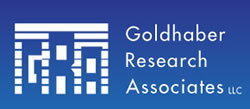The Goldhaber Warnings Report - How to Design a Product Warning: Best Practices
By: Gerald M. Goldhaber, Ph.D.
President & CEO GRA LLC
Office: (212)379-6661
Cell: (917)279-2303
Email Dr. Gerald Goldhaber
View
Profile on
Experts.com.
View PDF version of the Goldhaber Warnings Report - Vol. 1
In the last issue of this newsletter, I listed four key questions that must be answered when conducting a warnings
review. Answers to these questions, as well as following the detailed steps I now provide, should help you determine
whether or not you need to warn or, if you already warn, whether or not your warning(s) is/are adequate.
1. What hazard(s), risks and dangers that are known or likely to be known to us (the manufacturer) exist or are likely to exist with the use of our product(s)?
A meeting among the key engineers who have designed the product and the marketing personnel who must sell the product (and any other relevant personnel, e.g., industrial hygienists, lawyers, etc.) should be held to discuss the details of:
- How can an individual get hurt at the time they use the product?
- If there is a medical or scientific literature about the product's potential hazards, what are the conclusions?
- If there is a documented history of injury, complaints or legal claims associated with this product's use, what are the
conclusions from this history of use?
- How severe is the injury likely to be?
- How likely is the injury to occur (risk)?
- Are these hazards likely to be hidden or open and obvious to the likely user? (e.g., knives typically have no warnings
because their hazards are well known to most people.)
2. Who is the likely user of our products that may be hazardous at the time of use? A meeting among marketing personnel should be held, during which they consult any available market research and demographic studies to identify and profile the likely or typical user of the product(s). Warnings are a form of communication and, as with any communication, should be designed with the intended audience in mind. A review of all sales, promotional and safety literature related to the product, including manuals, current labels, brochures, the company web site, advertisements, packaging, videotapes or DVD's of ads, as well as any in-house documents (memos, minutes of meetings, studies, etc.) related to the design, development and evaluation of warnings should occur.
3. If the hazards exist and are unknown or hidden to the user, how can we best communicate with or warn the user about these hazards, their consequences and how to eliminate or reduce the risk of exposure to these consequences?
Although we will devote several future issues to this question, for now, it is important to understand that an effective warning must be seen, read and understood so that the user can decide how to proceed safely and avoid injury from product use. Most warnings should, in a clear, conspicuous manner, communicate the following information:
- A clear statement of the hazard(s) and danger(s) that the user is likely to confront at the time of use.
- Specific consequences that are likely to occur as a result of exposure to the hazard(s) and danger(s).
- Specific instructions or steps to help reduce the likelihood of exposure to the hazard(s) and danger(s)
- An appropriate signal word (e.g., Danger, Warning, Caution) that informs the user both of the level of severity of the
hazard(s) and how immediate the consequences are likely to occur.
4. If there are standards or regulations that would govern the content and/or method to warn about the hazard(s), what are they and how can we conform to them? You should conduct a regulatory review by collecting all relevant standards and regulations from government agencies, trade groups and/or standards-granting organizations that may directly or indirectly relate to warnings for this product. Some regulations are mandatory and many standards are advisory, but they should be consulted nevertheless when considering best practices for warnings as well as the current "state-of-the-art." A review of your competitors' warnings may also be helpful at this time.
The next issue of this report will provide more information about how best to communicate product warnings and some of the factors that may influence their impact. Feel free to pass this newsletter on to any of your friends and colleagues.
Dr. Gerald M. Goldhaber, the president of Goldhaber Research Associates, LLC, is a nationally recognized expert in the fields of political polling and warning label research. His clients include Fortune 500 companies, as well as educational and governmental organizations. He has conducted hundreds of surveys, including political polls for candidates running for U.S Congress, Senate, and President. Dr. Goldhaber also served as a consultant to President Reagan's Private Sector Survey for Cost Control.
Dr. Goldhaber has written and edited 10 books and is a frequent international lecturer on the topic of communication. He writes numerous articles on a variety of issues for publication in journals and newspapers across the country, and has served as a political analyst for numerous radio and television shows. He has been selected as a member of Who's Who in America and Who's Who in the World.
See Dr. Gerald Goldhaber's Profile on Experts.com.
©Copyright - All Rights Reserved
DO NOT REPRODUCE WITHOUT WRITTEN PERMISSION BY AUTHOR.










